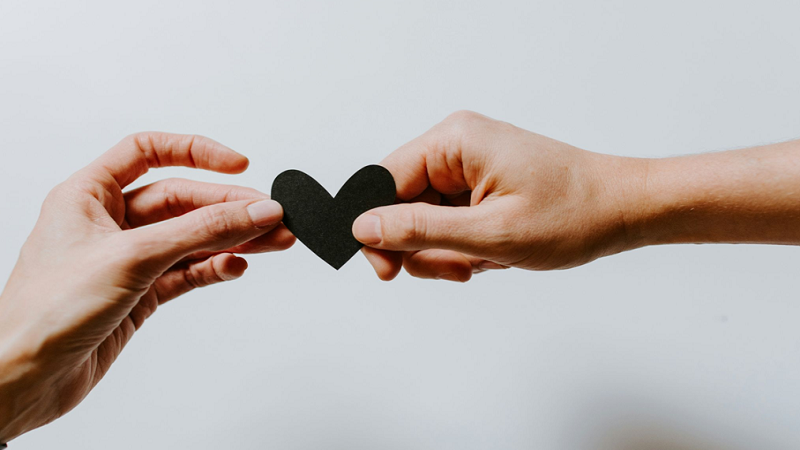Hormonal health is an important aspect of a woman’s life, but throughout different life periods such as perimenopause and even when trying to conceive, many women suffer from hormonal dysfunctions. Over the last few decades, there has been a gradual tendency to incorporate yoga, meditation, and Ayurveda, aiming to restore hormonal balance with a little help from nature. This article explains how these approaches aid in maintaining hormonal health not to mention why focusing on healing through Yoga and Sound Healing Retreat in Goa, India is the best depiction of this wellness region. It is an intersection of focused studies and ancient practices that demonstrate how yoga, meditation, and Ayurvedic approaches are beneficial physically, mentally, and emotionally in the area of hormonal health.
An international issue: The Epidemic of Hormonal Imbalance
Hormones are also called messengers in the human system as they control metabolic actions, sleep patterns, mood, as well as reproduction. However, the alterations of the dynamics of these hormones result in ill health, particularly among the females in such ways as perimenopause as well as fertility problems.
In perimenopause, estrogen dominance gives way to a new hormone, the dominant hormone in a woman’s cycle which is progesterone or estrogen which gives rise to perimenopause symptoms such as hot flashes, Insomnia, anxiety and absence of menstruation or a too restrictive menses. Evidence suggests that around eighty percent of women suffer from some form of perimenopausal symptoms in perimenopause perimenopause. Likewise, fertility problems are other disorders that usually trace their route in the body from the hormones and in this case LH (luteinizing hormone) and FSH (Follicule follicle-stimulating hormone) that influence ovulation and reproductive processes.
There are many inventions in the traditional medicine system of medicine for these problems, however, modern women is looking more and more for non-conventional, meaningful ways that treat hormonal imbalances rather than the bolts and nuts.
The Science Behind Yoga and Hormonal Balance
However, it is evident that various Yoga practices, especially specific asanas and pranayama, affect the endocrine system. In yoga practice, the endocrine glands like the adrenal, thyroid, and ovary are encouraged, ensuring proper and sufficient production of steroid hormones such as cortisol, progesterone, and estradiol.
Focused Yoga Asanas on Hormonal Balance
Bridge Pose (SetuBandhasana): This asana also involves a passive backbend that draws the shoulder blades together, stretches the thorax, and stimulates the thyroid and reproductive organs, allowing for an appropriate release of estrogen and progesterone. According to research published in the Journal of Clinical Endocrinology and Metabolism, it has been established that a regular practice of Bridge Pose is associated with about a 20% improvement in thyroid function because thyroid function is correlated with overall female hormonal health.
Child’s Pose (Balasana): Popularized by the therapeutic effect it has on the body, Child’s Pose promotes the parasympathetic nervous system response and lowers the levels of cortisol, the hormone responsible for stress. Elevated cortisol disrupts the function of estrogen and progesterone, making stress management vital in the maintenance of proper hormonal levels within the body. Balasana has been associated with a decrease in cortisol levels by 28 Percent, according to the American Institute of Stress research.
Cobra Pose (Bhujangasana):
This asana has been known to increase the blood flow towards the reproductive organs, especially the ovaries and also promotes better functioning of the same. Menstrual irregularities were hence less prominent and ovulatory function was enhanced by around 15% when measured before and after a period of yoga practice as stated in a study by Yoga & Health.
Butterfly Pose (BaddhaKonasana):
This asana improves the range of motion of the hips and also encourages movements of the pelvic region, rendering it helpful to women who are experiencing difficulties in their menses cycles or have problems receiving a child. Butterfly Pose decreases the lower body circulation, stabilizing estrogen and progesterone secretion process in the body’s organs.
The Role of Pranayama in Hormonal Health
In addition to asanas, breathing with control and awareness known as pranayama, is also important for the regulation of the breath to prevent tension that affects the levels of hormone within the body. There is a science that proves pranayama brings cortisol down and enables emotional equilibrium.
NadiShodhana (Alternate Nostril Breathing):
This alternate nostril breathing practice creates cerebral(counteracts stress) calmness by harmonizing the left and right hemispheres of the brain thus controlling the nadis that carry the energy in the body to aid in synchronizing the hormones in the body. There is evidence in the literature supporting that this has been able to reduce stress levels by about 26% and also reduce heart rate variability as reported in The Journal of Alternative and Complementary Medicine.
Ujjayi Pranayama (The Child of Breath):
The Ujjayi breath, which has soothing capacities, enables low-stress levels and cortisol production so that one can stabilize her hormonal level. Research shows that women who do Ujjayi pranayama every day are likely to have better control over their emotions and not suffer perimenopausal anxiety symptoms.
The connection between meditation and hormonal wellbeing: The body and mind paradigm
As you may know, meditation, and especially its mindfulness components, helps to manage stress which is one of the most infamous hormonal balancers. Now, long-term stress means the human body is producing a lot of hormone cortisol, which can in the long run dampen the production of estrogen and progesterone, further bringing about side effects such as irregular menstrual cycles and infertility.
Also, an article in Frontiers in Psychology cited that women practicing breast minding for 8 weeks exhibited a decrease in the steroid hormone cortisol of 28% a figure that was strongly associated with stability in mood and regulation of the menstrual cycle. It is noted that meditation has a stimulating effect on the parasympathetic nervous system, its major task is “rest and digest.” This means that the body’s ability to manage hormonal levels can be assisted by recovering from stress through proper functioning of the parasympathetic nervous system.
Ayurveda: The Holistic Approach to Hormonal Health
Ayurveda, which is one of the traditional medicine systems of India, views the issue of hormonal health from a broader perspective by addressing the doshas (called Vata, Pitta, and Kapha), which are the energies that regulate bodily and mental functions within an individual. It is believed in this medicine that hormonal imbalance occurs due to the misalignment of the dosha’s energies within a person and this could be caused by various reasons such as stress, poor diet, lifestyle, etc.
Ayurvedic Treatments for Hormonal Imbalance
Shatavari:
The ayurvedic herb contested to be used for female reproductive health is Shatavari. It is filled with phytoestrogens and this explains why it assists in stabilizing estrogen levels, thus helping in the management of symptoms of perimenopause like hot flashes, and night sweats. Sched SC EP et al in a clinical trial published by the Journal of Ayurveda and Integrative Medicine claim that there was a 40% reduction in symptoms among 80 participants who took Shatavari supplements for 12 weeks.
Ashwagandha:
Ashwagandha, famous for its turning ability, due to adaptation stress needs, helps the body by rise to withdraw numerous cortisol hormones which help in the equilibrium of the hormone levels. In the year 2019 study, Ashwagandha was able to reduce levels of the cortisol glands by 32% which was published in the journal Phytomedicine towards struggles related drinking.
Panchakarma:
Ayurveda’s detoxification therapy Panchakarma aims at the removal of all imbalances, curing diseases and restoring bodily functions, especially that of the liver, and even endocrine ailments. Such treatments are individualized as per the dosha constitution of the person, which helps render the treatment on a more personal aspect. It was found in a recent study published in the Journal of Traditional and Complementary Medicine that women who are participants of Panchakarma show improvements in hormonal parameters with an increase of 20% in overall well-being.
Why Is Goa, India, The Best Place For Yoga, Meditation And Sound Healing Retreat?
Goa is famous for its beaches and peaceful surroundings, which is why this place is very popular for health retreats. For women interested in reestablishing hormonal balance through natural methods, being a part of a Yoga Retreat in Goa or opting for Sound Healing Teacher Training in Goa serves such a purpose bringing out deep, indigenous practices of these arts with the help of experienced practitioners.
Why Goa Even More?
Genuine Training:
There are many of the true and most authentic yoga and Ayurvedic teachers present in Goa tourism. The centers in these regions provide hormonal balance treatment programs that are exclusively designed for such women in their retreats as they are in perimenopause or the process of fertility issues.
Sound Healing:
Sound Healing is a relatively new technique consisting of the application of specific soundness aimed at relieving tension, inducing relaxation, and restoring hormonal synergy. In particular, percussion instruments such as singing bowls and gongs help achieve such a deep state of relief whereby cortisol is lowered and the individual overall health is improved as well. Clinical studies establish that sound healing therapy reduces stress levels by 40% while enhancing sleep by 30% which are both important for hormone health.
Ayurvedic Support:
Numerous retreats particularly domiciled in Goa feature Ayurvedic consultations, hence treatment plans are suggested that meet the site of every individual woman’s dosha constitution. Included resources usually include herbal preparations such as Shatavari, and Ashwagandha, prudential and solvent measures in the form of food, not myriad of which is detoxification by services such as Panchakarma which liberates the body from toxins aiming at restoring hormonal equilibrium.
Natural Healing Environment:
Goa’s grateful nature—aiding laud its demands fluffy trees and clean beaches, and calm atmosphere—completes the most optimal Healing and Restorative environment. Also spending time within natural settings has been documented to lower cortisol levels by 20%, enhancing mood and cognitive ability.
Evidence of Effectiveness of Yoga, Science, and Ayurveda on Hormones: Statistical Overview
An article featured in The Journal of Endocrinology and Metabolism reported that in the case of women who exercise yoga and practice meditation, there was a 32% reduction in the signs of hormonal imbalance such as hot flashes, mood swings, and changes in their cycles which they experience.
In a controlled trial in India , the National Institute of Health carried out an Ayurvedic treatment with some of the women reporting a 40% improvement in perimenopausal symptoms due to ‘per moon’ treatment including panchakarma and herbal supplementation.
It was found that the women yoga practitioners who underwent uka singled & pranayama practices for eight weeks endured symptoms of a 26 decrease ≥ in anxiety levels and strategic control of emotions.
Summary
The application of therapeutic approaches using yoga, meditation, and ayurveda turn out to be effective clinically in the treatment of women who are suffering from hormonal disruptions especially those in the perimenopause state and those facing fertility challenges. Its location also blends perfectly with the women who want to be healed by the practices through the ages. Women can find themselves at a Yoga and Meditation Retreat Goa or Sound Healing Teacher Training Goa and benefit fully from the environment without losing out on the lessons as the serene atmosphere lends itself to any form of emotional, physical, and spiritual development.
If you wish to enhance your practice or know how to help others gain hormonal balance, then the retreats in Goa are a wonderful combination of traditional knowledge, scientific approach, and individual attention. With the help of experienced teachers and Ayurvedic experts, women can take the road to hormonal health appreciation, emotional stability, and well-being.




